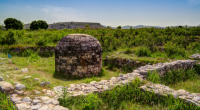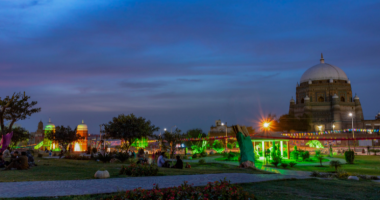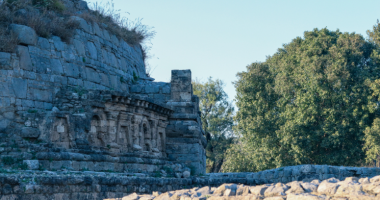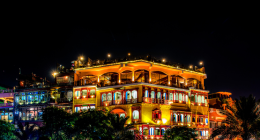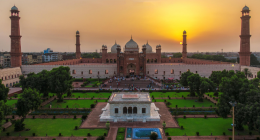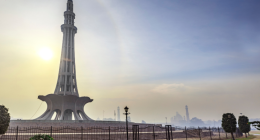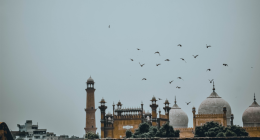If you’re passionate about history and culture, Multan historical sites offer a powerful glimpse into the past. This ancient city in southern Punjab, Pakistan, is packed with spiritual landmarks, majestic forts, and centuries-old architecture. Every structure here tells a story — whether it’s a shrine wrapped in legends or a fort built for kings.
Multan, often called the “City of Saints,” has attracted Sufis, scholars, and traders for centuries. Fortunately, many of its grand monuments still stand proudly today, inviting visitors from all over the world. So, whether you’re a curious traveler or a heritage enthusiast, you’ll love what this cultural gem has to offer.
1. Shrine of Bahauddin Zakariya – A Sacred Multan Landmark
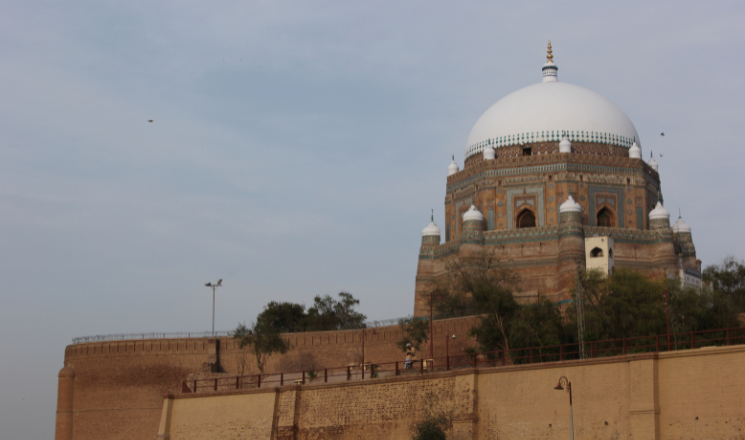
Among the most iconic Multan historical sites, the Shrine of Hazrat Bahauddin Zakariya stands out with its dazzling tile work and bold brick architecture. Built in the 13th century, this shrine blends spiritual energy with architectural brilliance.
The symmetrical dome and square layout symbolize early Islamic design, and the peaceful courtyard invites visitors to pause and reflect. Revered across Pakistan, it’s not just a religious site—it’s a living piece of history.
Use the Google Arts & Culture app here to uncover the saint’s teachings and historic details through interactive visuals.
2. Multan Fort – A Powerful Symbol of Ancient Multan Sites
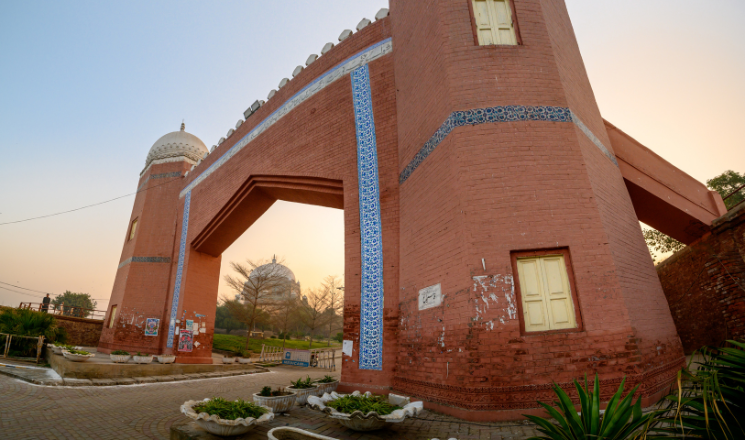
The Multan Fort, one of the oldest and most strategic Multan historical landmarks, once protected the city from countless invasions. Dating back to possibly the 9th century, the fort once boasted 46 bastions, four gates, and grand ramparts.
Although much was demolished in the colonial era, remnants like Qasim Bagh, Damdama, and the fort’s ruins still dominate the skyline. Walk its grounds, and you’ll feel the silent whispers of power, battles, and royalty.
ViewRanger or Sky Guide apps can help you explore the layout and get scenic overviews from the elevated walls.
3. Tomb of Shah Rukn-e-Alam – Jewel of Multan Heritage Sites
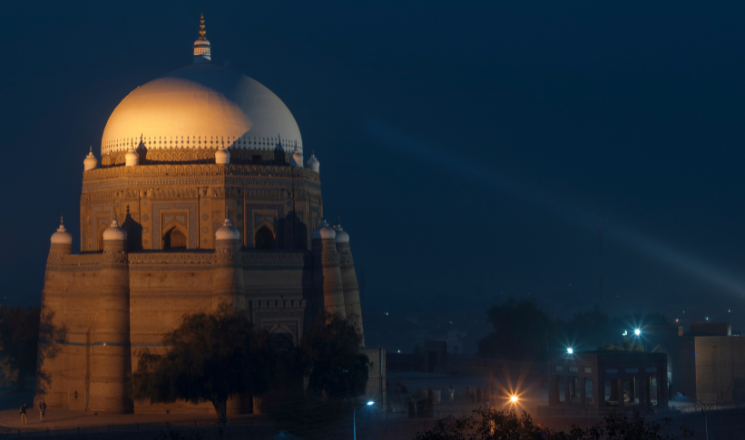
A visit to Multan heritage sites must include the breathtaking Tomb of Shah Rukn-e-Alam. Built in the early 1300s, it is the resting place of one of Multan’s most beloved Sufi saints.
The massive dome, intricately designed exterior, and surrounding gardens provide a deeply spiritual and artistic experience. It’s no surprise the tomb was nominated for UNESCO World Heritage status.
Use Heritagetopia for a guided history of the Tughlaq dynasty’s contributions to this architectural marvel.
4. Ghanta Ghar – A British-Era Multan Monument
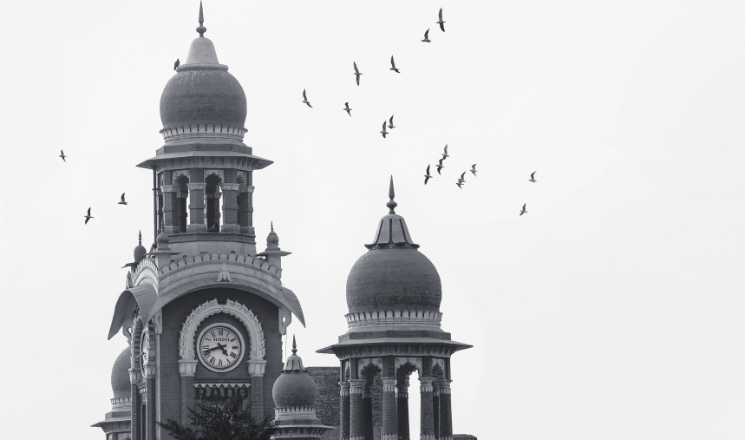
Standing tall in the heart of town, Ghanta Ghar is a prominent colonial-era monument in Multan. Built in 1884, this old clock tower is surrounded by energetic bazaars that contrast its Victorian calm.
From here, you can explore nearby attractions like Hussain Agahi Bazaar and Chowk Bazaar, both teeming with culture and local flavor. It’s the perfect spot where old-world charm meets modern bustle.
To make your exploration smoother, you could use the Detour app, which offers self-guided audio tours with rich historical context. Moreover, as you wander around, you’ll notice how effortlessly modern commerce blends with timeless architecture, enhancing the overall experience. Furthermore, this spot also acts as a cultural anchor that links past colonial influence with today’s vibrant Multan. As a result, every corner around Ghanta Ghar becomes an immersive blend of history and life. Therefore, whether you’re a history buff or a casual explorer, this site is definitely worth your time.
5. Tomb of Shah Shams Sabzwari – A Tranquil Multan Heritage Gem
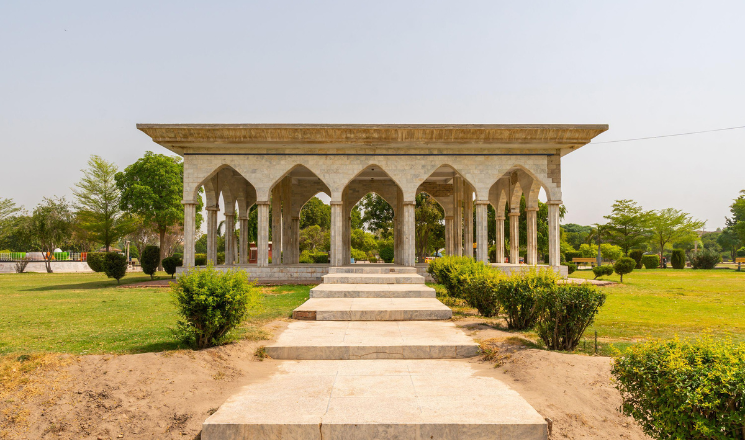
If you prefer lesser-known Multan heritage sites, the Tomb of Shah Shams Sabzwari is a peaceful retreat. This small but powerful structure honors a revered mystic who played a pivotal role in spreading Islam in the subcontinent.
While it’s less visited than others, its rich calligraphy, intricate tile art, and calm atmosphere make it unforgettable. Often surrounded by quiet prayer and reflection, it stands as a symbol of inner peace.
To discover more hidden gems like this, check out the Cultural Explorer app.
6. Sawi Mosque – A Forgotten Treasure Among Multan Ancient Sites

Tucked away in the city’s older quarters lies the Sawi Mosque, one of the oldest Multan ancient sites. Some claim it dates back to the early 11th century, making it an extraordinary relic of pre-Mughal Islamic architecture.
Though roofless and partially ruined, its ornate tilework and ancient inscriptions still shine. The site proves that even ruins can hold elegance, dignity, and deep spiritual meaning.
While there are no official tours here, locals will often share oral histories that bring the place to life.
Why Multan’s Monuments Still Matter
Exploring Multan historical sites is more than sightseeing—it’s about engaging with a legacy shaped by Sufism, conquest, and craftsmanship. These monuments preserve stories etched in every brick and minaret.
They reflect centuries of religious devotion, architectural skill, and cultural endurance. Thanks to modern tools and local hospitality, learning about them has never been easier or more rewarding.
So, wander curiously, pause deeply, and let Multan’s history whisper its wisdom.
Final Thoughts on Multan’s Historical Gems
To wrap it up, Multan historical sites aren’t just remnants of the past—they represent active chapters of an evolving story. Shrines, forts, mosques, and monuments here express faith, art, and perseverance.
Multan’s charm lies in how the city gracefully balances its history with the rhythm of present-day life. Moreover, whether you seek spiritual serenity or admire architectural beauty, Multan warmly welcomes all.
So, bring your journal, explore each site with intention, and let these landmarks share the story of a city shaped by centuries. After all, these unforgettable places ensure that Multan’s spirit continues to thrive through every visitor’s memory.


